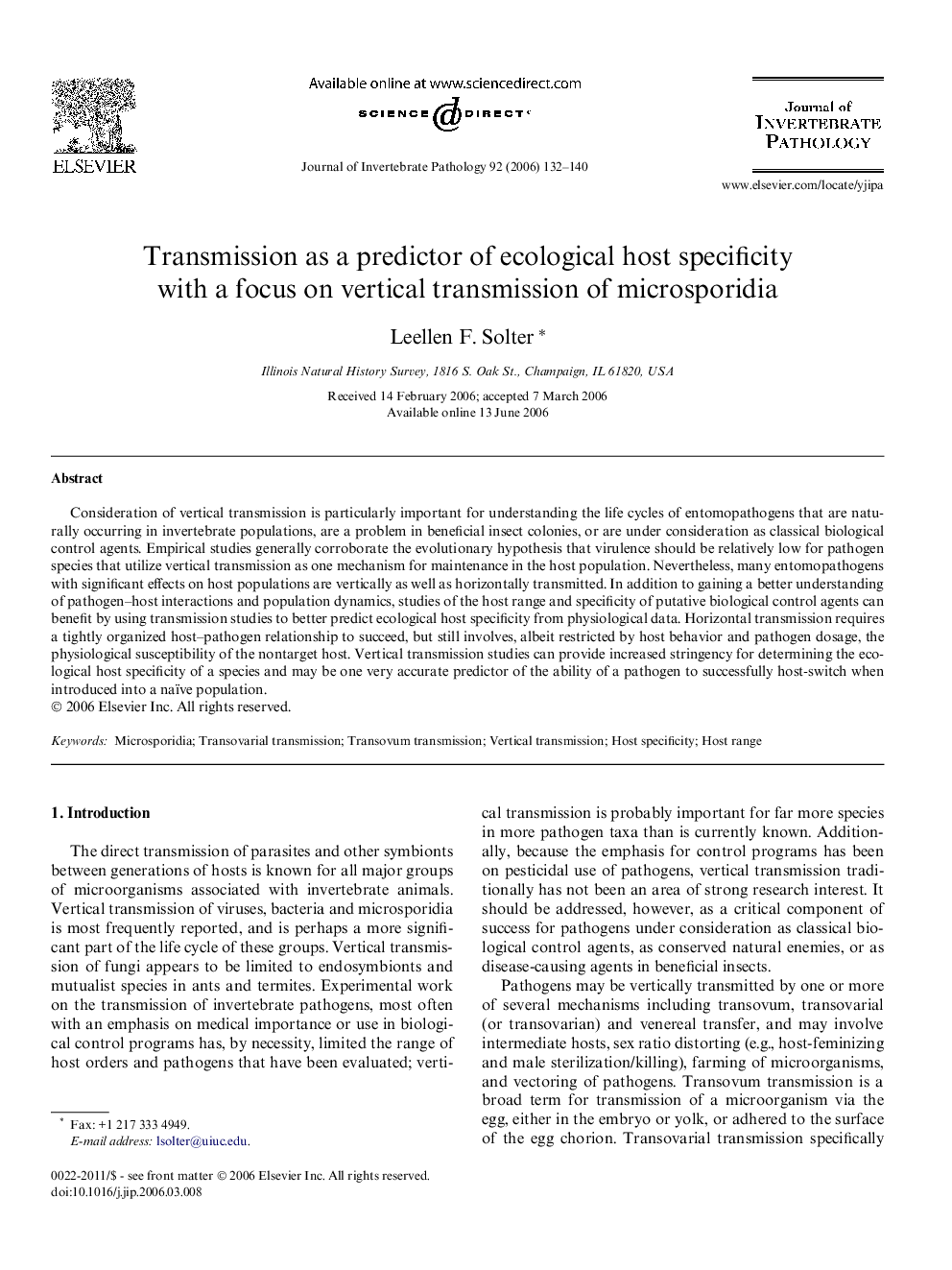| Article ID | Journal | Published Year | Pages | File Type |
|---|---|---|---|---|
| 4558806 | Journal of Invertebrate Pathology | 2006 | 9 Pages |
Consideration of vertical transmission is particularly important for understanding the life cycles of entomopathogens that are naturally occurring in invertebrate populations, are a problem in beneficial insect colonies, or are under consideration as classical biological control agents. Empirical studies generally corroborate the evolutionary hypothesis that virulence should be relatively low for pathogen species that utilize vertical transmission as one mechanism for maintenance in the host population. Nevertheless, many entomopathogens with significant effects on host populations are vertically as well as horizontally transmitted. In addition to gaining a better understanding of pathogen–host interactions and population dynamics, studies of the host range and specificity of putative biological control agents can benefit by using transmission studies to better predict ecological host specificity from physiological data. Horizontal transmission requires a tightly organized host–pathogen relationship to succeed, but still involves, albeit restricted by host behavior and pathogen dosage, the physiological susceptibility of the nontarget host. Vertical transmission studies can provide increased stringency for determining the ecological host specificity of a species and may be one very accurate predictor of the ability of a pathogen to successfully host-switch when introduced into a naïve population.
